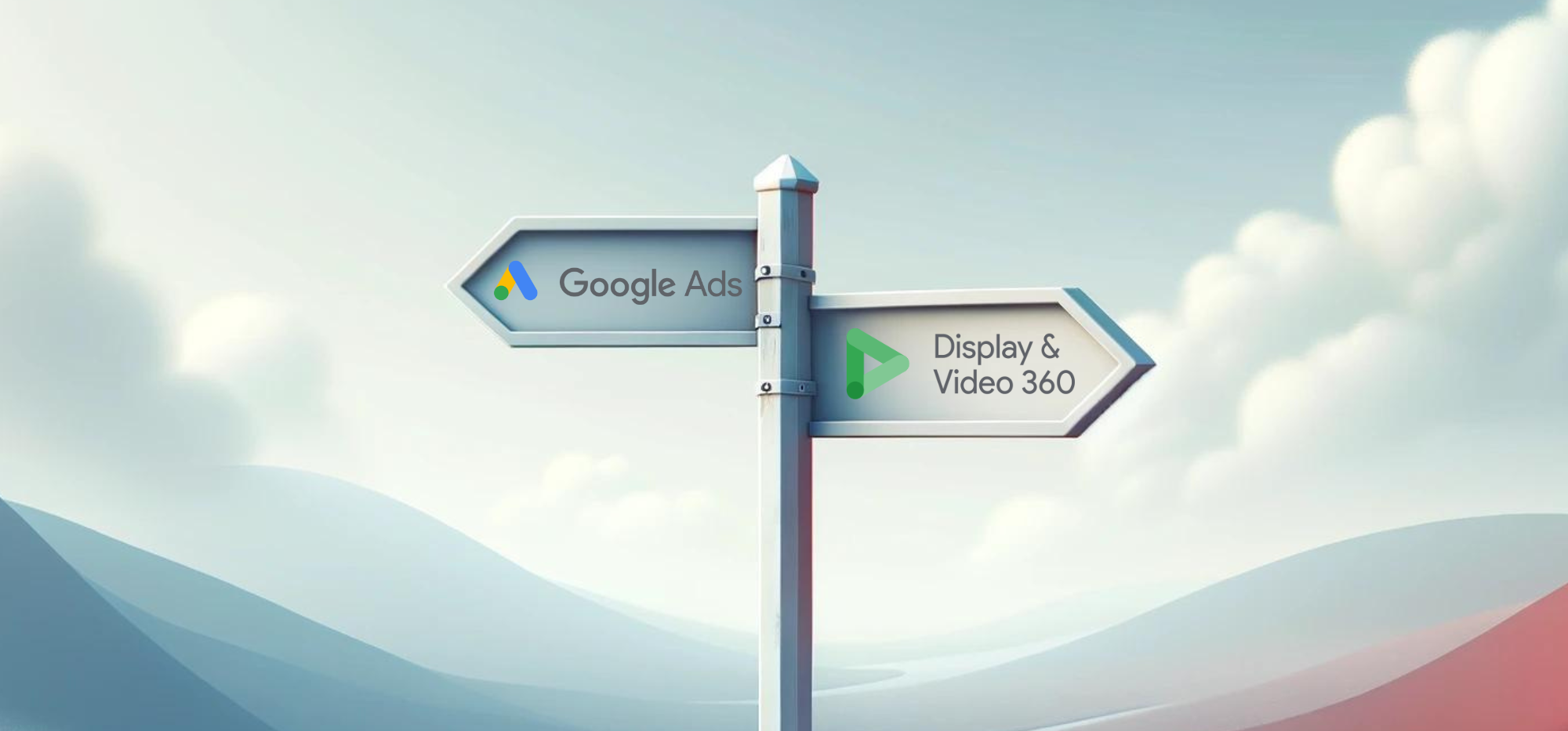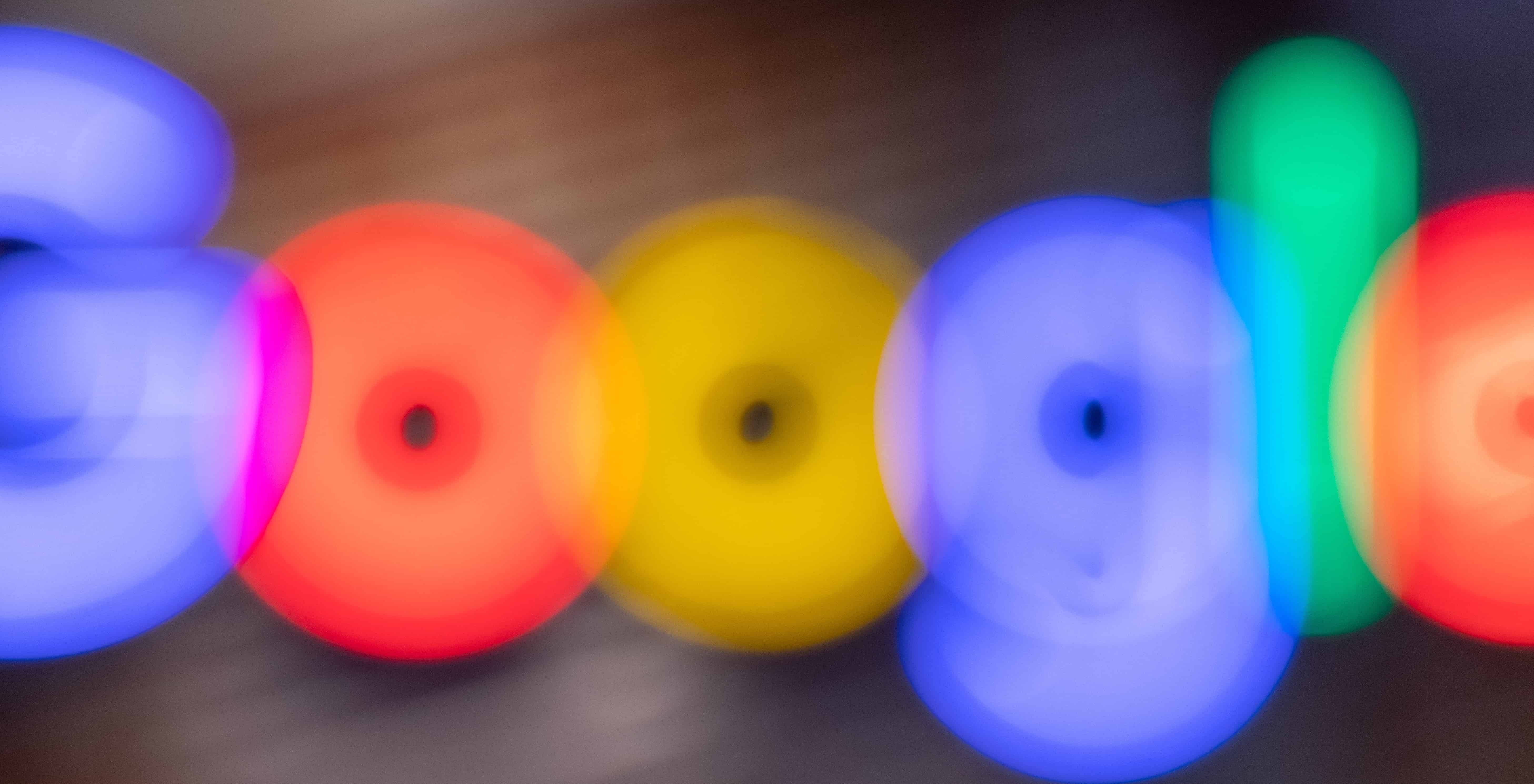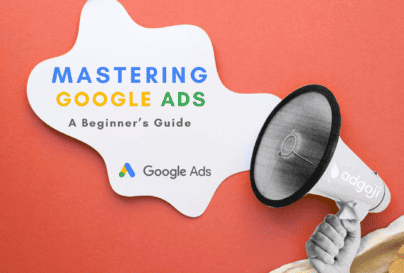Making the Right Choice: Display & Video 360 vs Google Ads
Are you having trouble deciding between Display & Video 360 vs Google Ads? Don’t worry, we’ve got you covered! In this post, we’ll break down the differences between the two platforms in a way that’s easy to understand.
written by: Wesley Balten

Key Differences between Display & Video 360 vs Google Ads
One of the primary differences between the two is the targeting options available. Display & Video 360 offers advanced targeting features like audience targeting, contextual targeting, and demographic targeting, which allow advertisers to reach their ideal audience more effectively.
Another key difference is cost. Due to its advanced capabilities, DV360 is generally more expensive than Google Ads. However, it may be worth the investment for businesses that require precise audience targeting and more robust campaign management tools.
It’s also essential to consider the types of formats available on each platform. Google Ads primarily focuses on search engine advertising and text-based advertisement, while Display & Video 360 specializes in visual advertising formats such as display, video, and native ads.
Deciding between Google Ads and Display & Video 360 depends on your advertising goals and budget. If you’re looking for basic search engine advertising at an affordable price point, then Google Ads may be the better option in terms of pricing. However, if you require advanced targeting options and a more comprehensive suite of campaign management tools, then Display & Video 360 may be the way to go.
Audience Reach: Display & Video 360 vs Google Ads
When it comes to audience reach, both Google Ads and Display & Video 360 offer powerful capabilities. These platforms allow you to target a wide range of audiences, including those watching TV, but with some key differences. In terms of the Google Display Network, Display & Video 360 provides more options for targeting, such as audience, contextual, and demographic targeting. With DV360, you can reach more users across a wider range of sites and exchange networks, which means that you can ensure you are appearing on the most relevant content and reach more visitors who meet your targeting criteria. Both platforms offer access to different exchanges, giving you the opportunity to reach your desired audience through various channels. By exploring the possibilities of targeting the right customers, you can make an informed decision on which platform is better suited for your needs.
Ad Formats: What Sets Them Apart?
Google Ads and Display & Video 360 differ significantly in terms of their formats. Google Ads offers standard formats, including text and shopping ads. On the other hand, Display & Video 360 provides a range of ad types. This enables advertisers to create more engaging and interactive campaigns that capture users’ attention.
It also allows for rich media possibilities, where advertisers can incorporate dynamic elements such as animations, videos, and interactive features. This can help increase engagement rates and drive conversions.
It is important to note that while DV360 provides more advanced formats, it also requires more technical expertise to use effectively. Advertisers must have a solid understanding of creative development and production techniques to create high-quality multimedia advertisements that perform well across different platforms.

Understanding Google Ads
Google Ads is a powerful platform that offers a range of features to help you reach your target audience effectively. With various formats, such as video and audio advertisements, you can engage users and make an impact. It can provide you with programmatic advertising capabilities, allowing you to automate your campaigns for maximum efficiency. By understanding the basics of Google Ads and familiarizing yourself with its available formats, you can make the most of this digital marketing tool, including its integration with Gmail for reaching a wider audience.
The Basics of Google Ads
Google Ads, formerly known as AdWords, provides a range of features and functionalities that can help achieve your advertising goals. One of the key aspects is the availability of different types, such as search ads, display ads, shopping ads, video ads, and in-app ads. Each type has its unique advantages and can be used for specific campaign goals. With this advertising platform, you can have the opportunity to reach a wider audience through targeted campaigns on Google search and partners, YouTube, and other platforms through the use of cookies and keywords.
To optimize your campaigns effectively, it’s essential to track and analyze metrics like click-through rates (CTR), conversion rates, cost per acquisition (CPA), and return on investment (ROI). This data can help you make informed decisions about your spend and continually refine your campaigns for better results.
It also offers tools like keyword planner and a preview tool that provide insights into how your ads will appear on search engine results pages (SERPs). By using these tools effectively, you can create compelling copy that resonates with your target audience.
At the end of the day it’s all about utilizing the various features and functionalities effectively. It takes time to master this platform fully; however, investing in learning its capabilities can result in significant returns for your business.
An Overview of Google’s Display & Video 360
Google’s Display & Video 360 is a powerful platform for digital advertising. It offers a wide range of capabilities, enterprise features, and management tools for accessing, buying, and understanding attribution across networks. The platform also streamlines media management and provides valuable insights into digital advertising trends.
Dive into Display & Video 360 Features
To choose the right advertising platform, understanding the platform is crucial. There are some really powerful features at play here:
- Media strategy insights
- Powerful performance measurement and optimisation tools
- Bulk or individual media buying options
- Wide range of inventory and exchanges
- Brand safety features to protect your brand from negative publicity.
Exploring the Advantages of Display & Video 360
Display & Video 360 is a powerful platform that offers several advantages to marketers looking to enhance their digital media campaigns. One of the key benefits of using the platform is its advanced targeting capabilities, which allow you to reach the most relevant audience with precision.
Another advantage of DV360 is its ability to track user behavior through display campaigns and floodlight tags. This enables you to optimize your advertising efforts accordingly and make data-driven decisions for future campaigns.
By utilizing the advantages of Display & Video 360, marketers can elevate their digital media campaigns and achieve better outcomes. Whether it’s through advanced targeting, powerful bidding strategies, or tracking user behavior, this platform has everything you need to take your advertising efforts to the next level.
Which platform suits your needs: Display & Video 360 vs Google Ads
Google Ads and Display & Video 360 are two advertising platforms with distinct features and targeting options. It is essential to understand their differences before deciding which platform to use based on your advertising goals, budget, and resources. Google Ads is primarily a search engine marketing platform that allows you to create text ads for search results pages. On the other hand, Display & Video 360 deals with display advertising, video advertising, and programmatic buying.
Google Ads offer more granular targeting options such as location, device type, keywords, and audience demographics. It also provides more flexibility in formats like responsive search and dynamic creative optimization. DV360 offers advanced targeting options like contextual targeting, behavioral targeting based on user interests/activities across the web and social media platforms. It also provides access to premium inventory of publisher websites.
Deciding Factors for New Advertisers
Are you new to online advertising? If so, it’s best to start with Google Ads. This platform offers a user-friendly interface that is perfect for beginners. However, if you’re looking for advanced targeting capabilities, consider Display & Video 360. Before making a decision, take a look at your budget and campaign goals. It’s also a good idea to consult experts who can help you determine which platform suits your needs best. Remember, choosing the right platform is crucial for the success of your advertising campaigns.
What Experienced Advertisers Should Consider
When it comes to experienced advertisers, there are several key factors to consider in choosing between these two powerful platforms. Exploring Display & Video 360 for programmatic advertising is a great starting point, as it offers advanced reporting and analytics capabilities. Evaluating scalability and automation features is also crucial. Finally, seeking recommendations from fellow experienced advertisers can provide valuable guidance in making the better option for small and medium-sized advertisers who do not want to invest heavily in programmatic display activity. DV360 is a demand side platform (DSP), which allows the programmatic buying of advertising with a wider variety of settings, and selection of sites, placements, and formats.
Using adgoji to create and optimize Display & Video 360 campaigns
Adgoji is a user-friendly platform that enables the creation and optimization of campaigns on Display & Video 360. Our platform offers a straightforward approach to creation and optimization, making it easy to use for even those without extensive technical knowledge. With adgoji, you can quickly create compelling ads that effectively target your intended audience.
Ready to take your advertising campaigns to the next level? Look no further than our campaign creation and optimization platform. With a direct connection to Display & Video 360, you will have the opportunities to tailor effective campaigns to your specific goals and target audience.
Conclusion
If you’re looking to take your advertising campaigns to the next level, it’s important to understand the key differences between Display & Video 360 vs Google Ads. Both platforms offer unique advantages and capabilities that can help you reach your target audience effectively. Google Ads provides a wide audience reach and various formats, while DV360 offers advanced buying capabilities and a comprehensive set of features. To make the right choice for your needs, consider factors such as your advertising goals, budget, and experience level.
And lastly if you want to learn more about Google Ads I’ve written a beginner’s guide for this as well.



